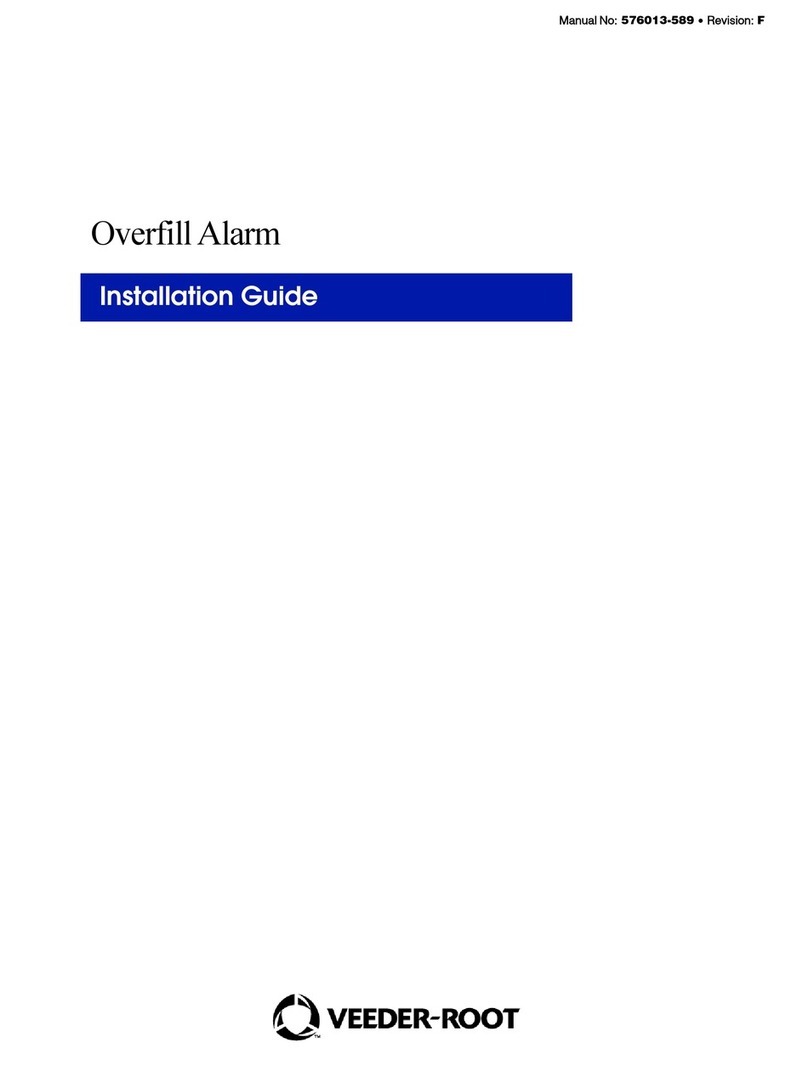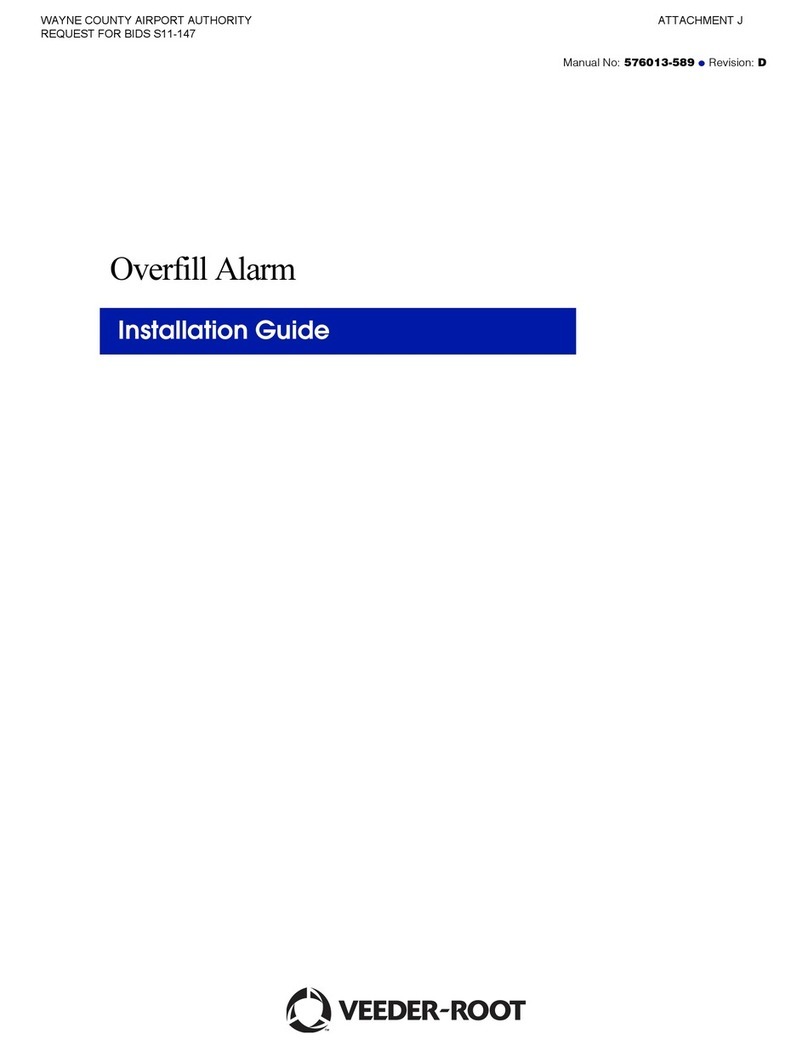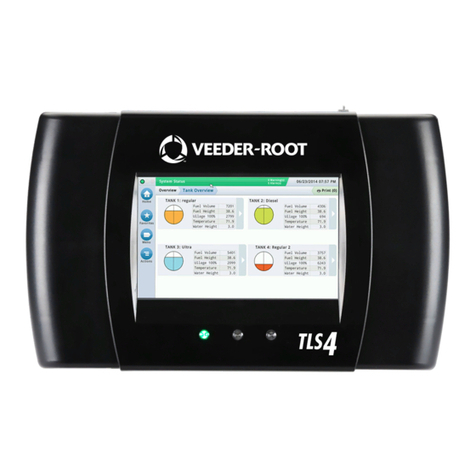
3
Pump-on pressures indicate a Periodic (0.20 gph) or Annual
(0.10 gph) line leak test failure has occurred.
Probable Causes:
1. The line is leaking.
2. Check valve leaking
3. Packer -Discharge Seal (Red Jacket STP) - replace with the
correct seal for your application.
4. Dispenser is leaking. External leaks (connections, filters,
etc.), or internal leaks (solenoid valves in dispensers leak-
ing into nozzle hose, blender valve leaking, etc.)
5. The console is not programmed for the correct line length /
type.
Troubleshooting Guidelines:
a. Switch STP On and inspect all visible areas of pipeline, dis-
penser piping, and STP for leakage.
b. Check for dispenser solenoid valve leakage by squeezing
each nozzle with STP On and dispenser switched Off.
c. If dispensers are blenders,check for blend valve leakage by
looking for meter movement (no dispensing and STP On).
d. After making any necessary repairs to correct problems
identified in steps a - c, retest line to confirm failure: If it
passes, but no repairs were made, the problem is intermit-
tent. The most common intermittent causes are items 2 and
4. If it fails, close all dispenser emergency shut-off (‘crash’)
valves, and retest. If it fails, the most common causes are
items 1, 2, and 3. If it passes, the problem is in one of the
dispensers. Open the shut-off valves, one at a time, or to
save time, in groups, and continue testing until leakage
recurs to identify suspect dispenser.
Note: 0.20 gph tests take a minimum of 30 minutes and 0.1 gph
tests take a minimum of 45 minutes.
PERIODIC OR ANNUAL TEST FAIL ALARM






























